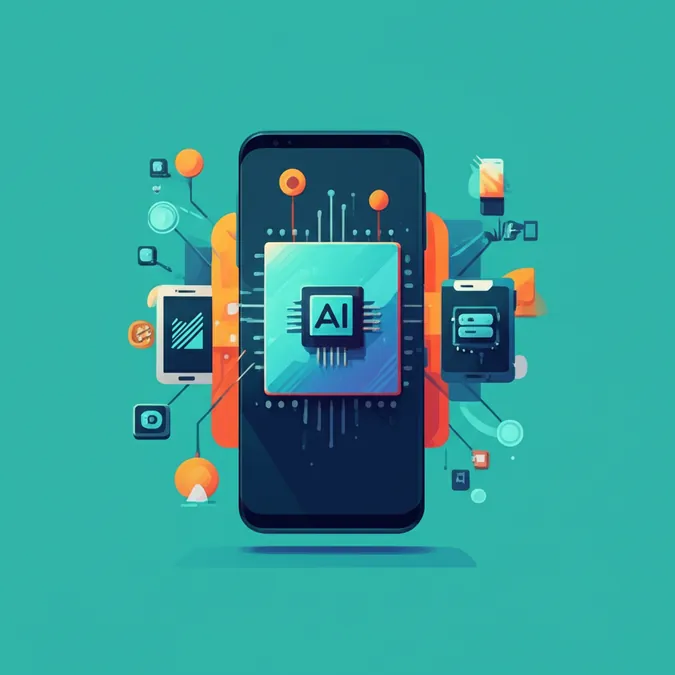AI Ghibli Magic Your Photos Your Privacy Risks
The internet is buzzing with a new trend called Ghiblified AI images, where advanced Artificial Intelligence (AI) meets art in a truly magical way. These tools take your everyday photos and turn them into stunning pieces of art that echo the unique, whimsical animation style of the famed Japanese animation studio, Studio Ghibli.
The tech behind this uses deep learning algorithms to apply Ghibli’s distinctive art style to ordinary photos, resulting in creations that are both nostalgic and fresh. However, as captivating as these AI-generated images are, they bring along serious privacy worries. Uploading personal photos to AI platforms can expose you to risks far beyond simple data storage.
What Are Ghiblified AI Images
Ghiblified images are your personal photos reimagined in an art style that closely mirrors the iconic animations of Studio Ghibli. Using sophisticated AI algorithms, regular photographs are transformed into enchanting illustrations that capture the hand-drawn, painterly qualities seen in beloved Ghibli films like Spirited Away, My Neighbor Totoro, and Princess Mononoke. This isn't just about changing how a photo looks; it’s about reinventing the image, turning a simple snapshot into a magical scene from a fantasy world.
What makes this trend so compelling is its ability to take a simple real-life picture and morph it into something dream-like. Many fans of Ghibli movies feel a deep emotional connection to these animations. Seeing a photo transformed in this style can bring back cherished movie memories and evoke a sense of nostalgia and wonder.
The technology driving this artistic transformation heavily relies on two advanced machine learning models: Generative Adversarial Networks (GANs) and Convolutional Neural Networks (CNNs). GANs consist of two networks: a generator and a discriminator. The generator creates images attempting to mimic the target style, while the discriminator assesses how well these images match the reference. Through many iterations, the system improves at producing realistic, style-accurate images.
CNNs, on the other hand, are specialized for processing images and excel at detecting edges, textures, and patterns. For Ghiblified images, CNNs are trained to recognize the unique characteristics of Ghibli’s style, such as its signature soft textures and vibrant color palettes. Together, these models enable the creation of stylistically consistent images, giving users the power to upload their photos and transform them into various artistic styles, including Ghibli's.
Platforms like Artbreeder and DeepArt utilize these powerful AI models to let users experience the magic of Ghibli-style transformations, making it accessible to anyone with a photo and an interest in art. Through deep learning and the iconic Ghibli aesthetic, AI offers a novel way to enjoy and interact with personal photos.
The Privacy Risks of Ghiblified AI Images
While the fun of creating Ghiblified AI images is undeniable, it's crucial to understand the privacy risks involved when you upload personal images to AI platforms. These risks extend beyond data collection and include serious issues like deepfakes, identity theft, and the exposure of sensitive metadata.
Data Collection Risks: When you upload an image to an AI platform for transformation, you're granting the platform access to your image. Some platforms might store these images indefinitely to improve their algorithms or build datasets. This means that once a photo is uploaded, you lose control over how it’s used or stored. Even if a platform claims to delete images after use, there’s no guarantee that the data isn't retained or repurposed without your knowledge.
Metadata Exposure: Digital images often contain embedded metadata, such as location data, device information, and timestamps. If the AI platform doesn’t strip this metadata, it can unintentionally expose sensitive details about you, like your location or the device used to take the photo. While some platforms attempt to remove metadata before processing, not all do, potentially leading to privacy violations.
Deepfakes and Identity Theft: AI-generated images, especially those based on facial features, can be exploited to create deepfakes—manipulated videos or images that can falsely represent someone. Since AI models can learn to recognize facial features, an image of your face could be used to create fake identities or misleading videos. These deepfakes can be used for identity theft or to spread misinformation, making you vulnerable to significant harm.
Model Inversion Attacks: Another risk involves model inversion attacks, where attackers use AI to reconstruct the original image from the AI-generated one. If your face is part of a Ghiblified AI image, attackers could potentially reverse-engineer the generated image to get the original picture, further exposing you to privacy breaches.
Data Usage for AI Model Training: Many AI platforms use the images uploaded by users as part of their training data. This helps enhance the AI's ability to generate better and more realistic images, but you may not always be aware that your personal data is being used this way. While some platforms ask for permission to use data for training, the consent provided is often vague, leaving users unsure of how their images might be used. This lack of explicit consent raises concerns about data ownership and user privacy.
Privacy Loopholes in Data Protection: Despite regulations like the General Data Protection Regulation (GDPR) designed to protect user data, many AI platforms find ways to bypass these laws. For example, they might treat image uploads as user-contributed content or use opt-in mechanisms that don’t fully explain how the data will be used, creating privacy loopholes.
Protecting Your Privacy with Ghibli AI Images
As the popularity of Ghiblified AI images grows, it's increasingly important to take steps to protect your personal privacy when uploading photos to AI platforms.
One of the best ways to protect your privacy is to limit the use of personal data. It’s wise to avoid uploading sensitive or identifiable photos. Instead, choosing more generic or non-sensitive images can help reduce privacy risks. It’s also essential to read the privacy policies of any AI platform before using it. These policies should clearly explain how the platform collects, uses, and stores data. Platforms that don’t provide clear information may pose greater risks.
Another critical step is metadata removal. Digital images often contain hidden information, such as location, device details, and timestamps. If AI platforms don't strip this metadata, sensitive information could be exposed. Using tools to remove metadata before uploading images ensures that this data isn’t shared. Some platforms also allow users to opt out of data collection for training AI models. Choosing platforms that offer this option gives you more control over how your personal data is used.
For individuals particularly concerned about privacy, using privacy-focused platforms is essential. These platforms should ensure secure data storage, offer clear data deletion policies, and limit the use of images to only what is necessary. Additionally, privacy tools, such as browser extensions that remove metadata or encrypt data, can help further protect your privacy when using AI image platforms.
As AI technologies continue to evolve, stronger regulations and clearer consent mechanisms will likely be introduced to ensure better privacy protection. Until then, individuals should remain vigilant and take steps to protect their privacy while enjoying the creative possibilities of Ghiblified AI images.
The Bottom Line on Ghibli AI and Privacy
As Ghiblified AI images become more popular, they offer an innovative way to reimagine personal photos. However, it's crucial to understand the privacy risks that come with sharing personal data on AI platforms. These risks go beyond simple data storage and include concerns like metadata exposure, deepfakes, and identity theft.
By following best practices such as limiting personal data, removing metadata, and using privacy-focused platforms, you can better protect your privacy while enjoying the creative potential of AI-generated art. With ongoing AI developments, stronger regulations and clearer consent mechanisms will be needed to safeguard user privacy in this growing space.


